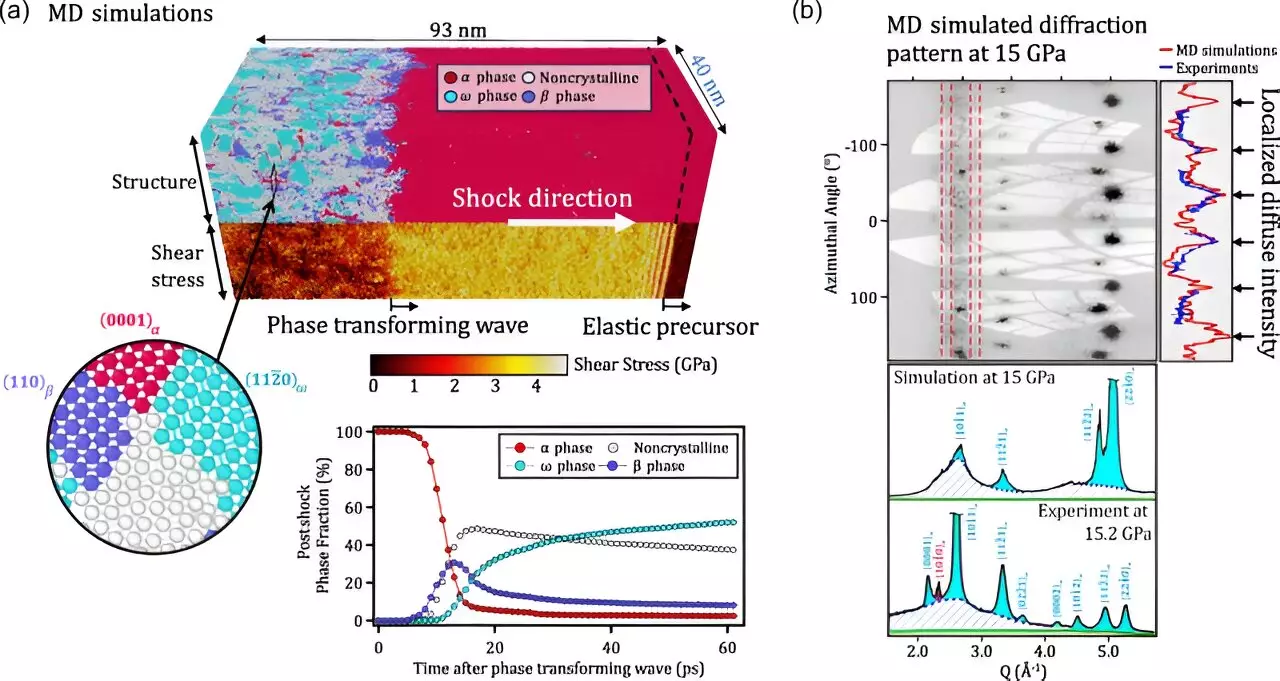In the realm of modern technology, the choice of materials is pivotal, particularly for applications demanding resilience under extreme conditions, such as nuclear energy and military scenarios. The ability of materials to maintain structural integrity under high pressure, temperature, and corrosive environments is not merely advantageous—it’s essential. A deep understanding of how these materials behave at the atomic level is crucial in advancing the development of future materials that are not only stronger and lighter but more sustainable and cost-effective.
Recent investigations led by scientists at Lawrence Livermore National Laboratory (LLNL) have shed new light on the behavior of zirconium, a metal widely utilized in nuclear technologies. By compressing single crystal samples of zirconium, researchers have uncovered unexpected deformation patterns under extreme pressure conditions. The findings, detailed in the journals Physical Review Letters and Physical Review B, provide insights into how materials alleviate shear stresses through multiple mechanisms like dislocation slip and crystallographic twinning.
According to Saransh Soderlind, an LLNL scientist and lead author of one of the studies, the microscopic behavior of materials under stress is vital for constructing predictive models that can forecast material performance. When metals experience stress, they undergo plastic deformation, resulting from the movement of defects known as dislocations. However, zirconium’s deformation behavior adds an additional layer of complexity due to its change in crystal structure under pressure.
The research team employed cutting-edge techniques such as femtosecond in-situ X-ray diffraction, allowing them to observe the rapid deformation of zirconium crystals within nanoseconds of application of high pressure. Remarkably, they documented phenomena of atomic disorder, a first for elemental metals, and identified several pathways for crystal structure transformation. This discovery differentiates single-crystal zirconium from its polycrystalline counterpart, highlighting the novelty and significance of the research.
These breakthroughs are not merely academic; they have real-world applications. Zirconium, known for its high strength and low neutron absorption cross-section, is integral to the nuclear industry, primarily used in fuel rod cladding. The insights gained from this research could lead to enhanced designs and materials that perform better under extreme conditions.
The findings regarding zirconium’s intricate atomic movements under stress present significant implications not just for zirconium itself but potentially for a wide variety of materials subjected to similar extreme conditions. The research emphasizes that the behavior observed may well be a common response in a range of elemental metals, thus broadening our understanding of material science.
As materials technology advances, the information gleaned from studies like this will undoubtedly play a pivotal role in informing the design of more resilient, efficient, and innovative materials. Understanding the nuances of atomic behavior under extreme stress will empower scientists and engineers to push the boundaries of what is possible, paving the way for groundbreaking advancements across numerous fields. Through such research, we take a significant step closer to mastering the art of material innovation in the face of formidable challenges.


Leave a Reply